
X is somewhat unusual in that it does not mandate a particular type of window manager. Its developers have tried to make X itself as free of window management or user interface policy as possible.In fact, it does not even require a window manager to be present at all:
— Xlib Programming Manual §1.2.3
Unlike citizens, the window manager has rights but not responsibilities. Programs must be prepared to cooperate with any type of window manager or with none at all […].This is in stark contrast to the integrative approach of other GUI systems. On Mac OS X and Unity, for example, an application could not possibly function without the window manager, as the latter is responsible for rendering a part of the application’s interface (e.g., menus).
— Xlib Programming Manual §1.2.3
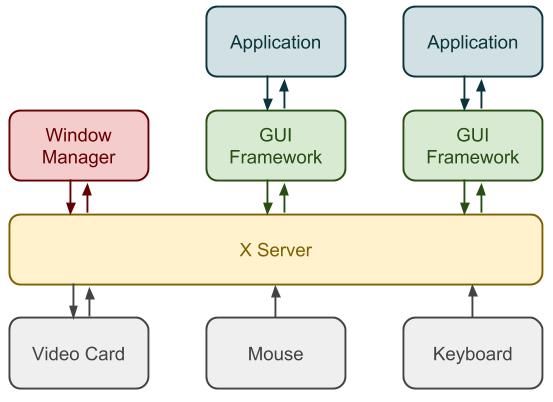

A child may be positioned partially or completely outside its parent window, but output to the child is displayed and input received only in the area where the child overlaps with the parent.For example, if we increase the width of the text box in the dialog above by 2x without changing the size of the dialog box, the portion of the text box that extends outside of the dialog box will become invisible, and clicking on it will not send an event to the text box.
— Xlib Programming Manual §2.2.2
The structure, as the term is used here, is the location, size, stacking order, border width, and mapping status of a window. The substructure is all these statistics about the children of a particular window. This is the complete set of information about screen layout that the window manager might need in order to implement its policy. Redirectionmeans that an event is sent to the client selecting redirection (usually the window manager), and the original structure−changing request is not executed.Note that only direct children of a window W is affected by substructure redirection on W, not any windows further down the hierarchy.
— Xlib Programming Manual §16.2
When the window manager selects SubstructureRedirectMask on the root window, an attempt by any other client to change the configuration of any child of the root window will fail. Instead an event describing the layout change request will be sent to the window manager. The window manager then reads the event and determines whether to honor the request, modify it, or deny it completely. If it decides to honor the request, it calls the routine that the client called that triggered the event with the same arguments. If it decides to modify the request, it calls the same routine but with modified arguments.In other words, a window manager must register for substructure redirection on the root window, which causes all creation, destruction, reconfiguration etc. of top level windows - which are direct children of the root window - to be routed to the window manager. This is the magic hook into the X server that window managers rely on to do their job.
— Xlib Programming Manual §16.2
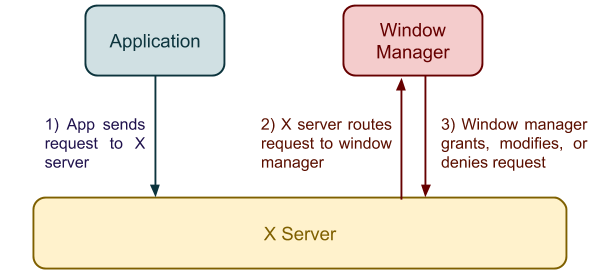
A window manager can decorate [top level] windows on the screen with titlebars and place little boxes on the titlebar with which the window can be moved or resized. This is only one possibility […].In other words, if we were to run an X application without a window manager present, the top level window of the application would be a direct child of the root window. With a window manager running, however, the top level window of the application may be reparented by the window manager; it becomes a child of a frame window which is created by the window manager, and which is itself a direct child of the root window. The window manager can add other UI elements inside this frame window alongside the application’s top level window as it sees fit.
To do this, the window manager creates a child of the root somewhat larger than the top level window of the application. Then it calls XReparentWindow(), specifying the top level window of the application as win and the new parent [window it just created] as parent. win and all its descendants will then be descendants of parent.
— Xlib Programming Manual §16.3
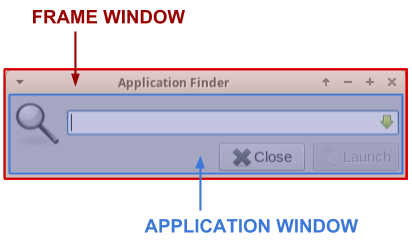
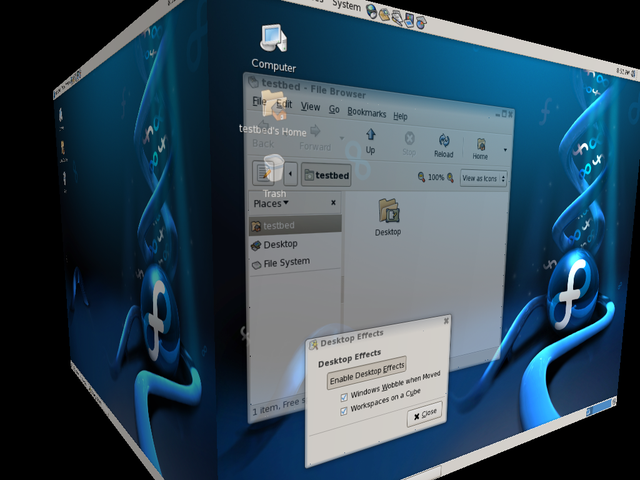
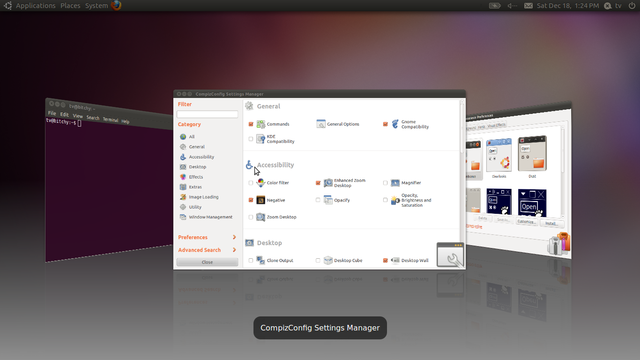
Many user interface operations would benefit from having pixel contents of window hierarchies available without respect to sibling and antecedent clipping. In addition, placing control over the composition of these pixel contents into a final screen image in an external application will enable a flexible system for dynamic application content presentation.The Composite extension provides a mechanism to request the X server not to render a specific window and its descendants directly to hardware, but to a special buffer maintained by the X server, and do so without the normal clipping and overlap computations. This buffer can then be read and used by the client that made the request.
— X Composite Extension
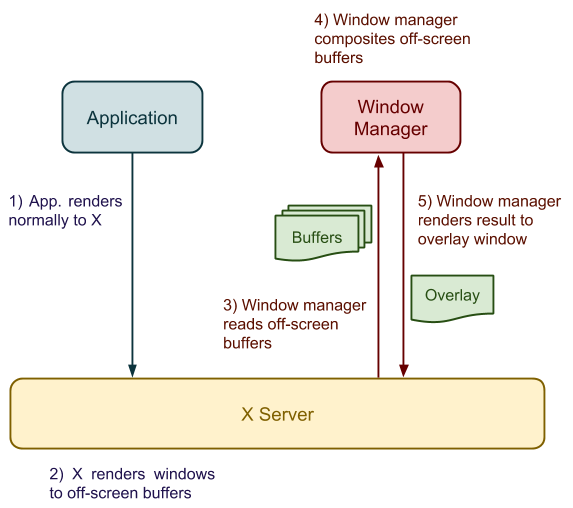
| 欢迎光临 杰表技术论坛 (http://bbs.jatools.com/) | Powered by Discuz! 6.1.0 |